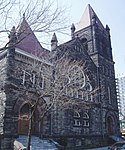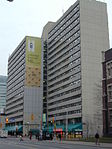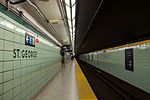The Annex

The Annex is a neighbourhood in Downtown Toronto, Ontario, Canada. The traditional boundaries of the neighbourhood are north to Dupont Street, south to Bloor Street, west to Bathurst Street and east to Avenue Road. The City of Toronto recognizes a broader neighbourhood definition that includes the adjacent Seaton Village and Yorkville areas.Bordering the University of Toronto, the Annex has long been a student quarter, and it is also home to many fraternity houses and members of the university's faculty. Its residents are predominantly English-speaking and well-educated. According to Canada 2011 Census, the neighbourhood has an average income of $66,742.67, significantly above the average income in the Toronto census metropolitan area. The Annex is not known for its big population of immigrants – in 2011, Statistics Canada declared that there were about 4,665 immigrants (predominantly from the United Kingdom and the United States) living in the area. As of the 2021 census, the three census tracts that compose the Annex have a total population of 14,149 and an average population density of 9,685 people/km².
Excerpt from the Wikipedia article The Annex (License: CC BY-SA 3.0, Authors, Images).The Annex
Madison Avenue, Toronto
Geographical coordinates (GPS) Address Nearby Places Show on map
Geographical coordinates (GPS)
| Latitude | Longitude |
|---|---|
| N 43.67 ° | E -79.404 ° |
Address
Madison Avenue 64
M5T 2E9 Toronto
Ontario, Canada
Open on Google Maps









